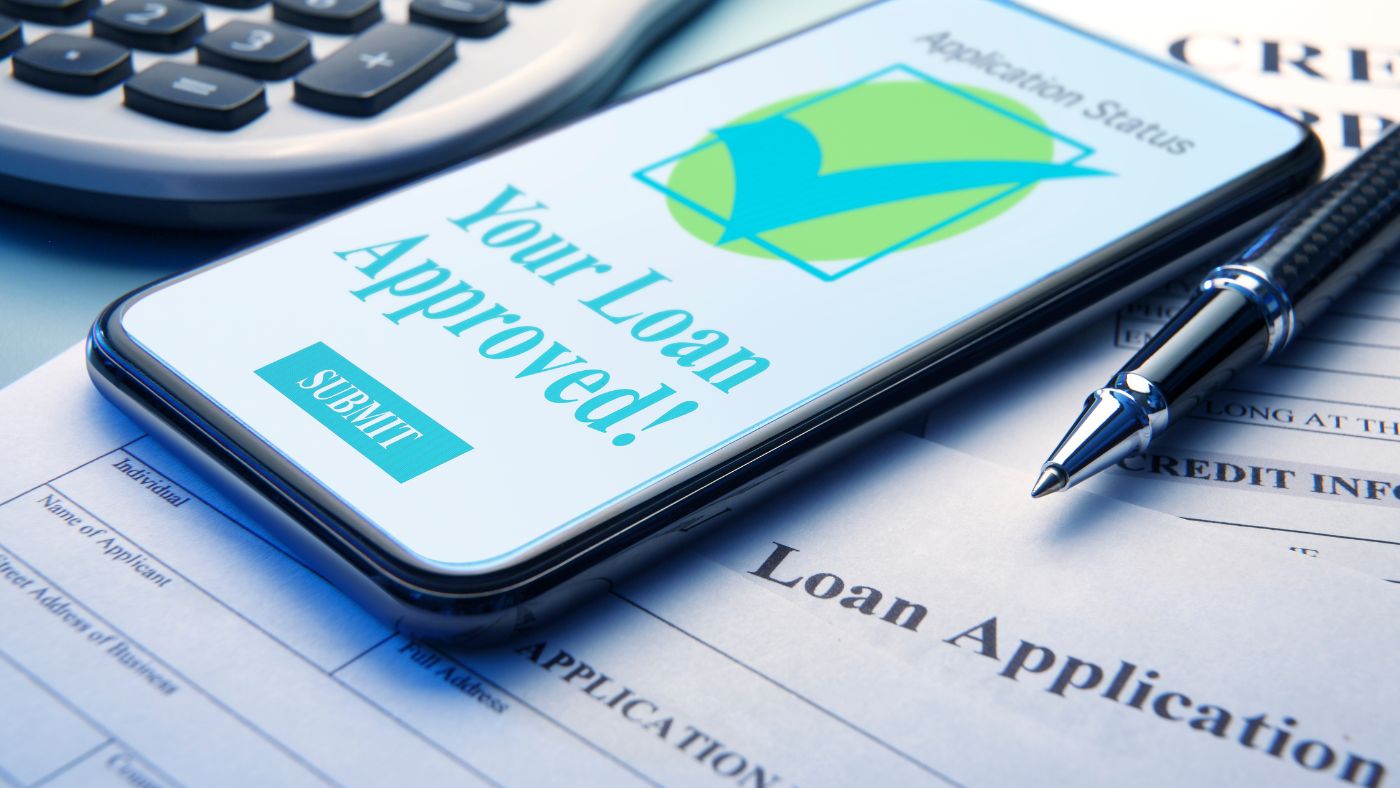Whether you’re buying a brand new boat or shopping around for a used vessel, odds are high that you’ll rely on a boat loan to finance your purchase. The cost of that loan is determined by the interest rate you’re offered, so it’s always smart to shop around and find the best boat loan terms before locking in a lender.
Here’s a look at how boat loan rates are determined and some ways you can improve the rates you’re offered.

Why Your Boat Loan Rate Matters
For many consumers, taking out a loan can be the key to buying the boat you want today… even if you can’t necessarily afford to pay for it in cash. By financing your boat purchase, you’re able to spread that cost out over a number of years with a monthly payment requirement that works for your budget.
Of course, the convenience of this financing option does come at a cost. Boat loan lenders charge interest in exchange for fronting the funds for your new (or new to you) vessel. This interest is charged on the principal balance of the loan and is expressed as an annual percentage rate, or APR.
The lower the APR you’re able to lock in for your boat loan, the less that loan will cost you in the end. This effectively reduces the actual out-of-pocket price of your boat, frees up your budget, and can even get you out of debt (and your boat paid off) faster.
What Determines Your Boat Loan Rates?
If you’ve ever shopped around for a boat loan — or even an auto loan, personal loan, or student loan — you’ve probably noticed that interest rates can vary pretty wildly. Different lenders offer different APR ranges on loans, which can mean the difference of thousands of dollars in interest for borrowers.
Even among the same lender, though, the interest rate offered to one consumer can be very different from the rate offered to another consumer. While the criteria is proprietary, lenders will usually consider a combination of the following when determining what rates to offer to borrowers:
- Credit score and credit history
- Income
- Debt-to-income ratio (DTI)
- Boat value
- Boat loan-to-value ratio (LTV)
- Location
- Loan repayment term
- Down payment amount
- Type of boat being purchased
- Age of the boat
- Market interest rates and conditions
- Type of loan
How to Get the Best Boat Loan Rate
So, you recognize that your goal is to snag the lowest possible interest rate on your next boat loan, while also keeping your monthly payments affordable. But how exactly do you go about getting the best boat loan rate for your purchase?
Here are the top ways to lock in a lower rate and what to look for along the way.
Check your credit
One of the biggest factors in determining not only your boat loan approval, but also the interest rate and terms you’re offered, is your credit score and history. The higher your credit score, the better the loan terms and the lower the interest rates you’ll generally be offered. Conversely, a low credit score, limited credit history, or negative reports can impact your APR and perhaps even result in an application denial.
Before you ever submit a boat loan application, consider checking your own credit. There are many free websites and apps that allow you to check and track your credit activity, and you’re allowed to request one free credit report from each of the three credit bureaus (TransUnion, Experian, and Equifax) each year through AnnualCreditReport.com.
Once you have your credit report(s) in hand, pick through each page carefully. Look for any errors that could be negatively affecting your credit score: late payments that were actually submitted on-time, accounts that you don’t recognize, names and addresses that don’t belong to you, inaccurate account balances or dates, and closed accounts that are still reporting as open.
If you find errors, be sure to report them to the creditor and to the reporting agency. You may need to provide proof, but getting an erroneous negative report removed can be an instant way to boost your score.
Even if you don’t find errors, checking your credit allows you to go into the boat loan process with a good idea of where you stand and what to expect. Plus, you can start working to improve your credit score, no matter where it’s at today!
Lower Your DTI
Your DTI, or debt-to-income ratio, is a percentage that compares your current income to any existing debt obligations you may have. In other words, how much of your incoming cash is already spoken for by other loans and minimum payments, and how much money do you actually have available for a new boat loan payment?
Each lender has its own DTI threshold, which is often in the neighborhood of 40-45%. If your current DTI is higher than this, you’ll need to either increase your income or decrease your debt obligation in order to qualify for a new loan.
This can be done a few different ways:
- Ramp up your income. Ask for a raise at work, take on a side hustle, or start a second job to increase your incoming cash flow. This will automatically reduce your DTI, without making any additional changes.
- Decrease your debt payments. If raising your income isn’t possible (or doesn’t have a big enough impact), you other option is to reduce your current debt obligations. You may be limited here: if you have installment loans, you can typically only change the required monthly payment by refinancing. With revolving balances, though (like credit cards), you can decrease the monthly obligation by reducing the account balance.
Consider New vs. Used
In most cases, a loan on a used vessel is considered to be a greater risk than a loan on a new vessel. For that reason, interest rates on used boats are often higher than interest rates on new boats.
If you’re looking for the lowest possible boat loan interest rate, shop around to see how much you could save by buying a new boat instead of a used one. That way, you can also see how rates differ on new and used boat loans.
Adjust Your Loan Amount
You may find that your interest rate also fluctuates based on how much you’re asking to borrow from a lender. If you are purchasing a very expensive boat, your offered rates might be higher than if you choose a more conservative vessel.
Boatzon lenders offer boat loans for up to $10 million, depending on the boat you want to purchase. If you’re looking to lower your interest rate, though, see if limiting your boat loan amount would have an impact. If so, if you can either shop for a different boat or borrow less (and make a larger down payment) to save money.
Choose a Shorter Loan Term
Your boat loan term represents how long you want to pay off that debt. This can vary from just a couple of years to multiple decades, depending on the lender, but the term you choose can also impact your interest rate.
Generally, a shorter loan term will result in a lower APR while a longer loan term results in a higher APR. Shorter loan terms also mean higher monthly payments, though, so it’s important to balance interest rates with what you can afford to pay each month until the boat is paid off.
Not sure what loan term is right for you? Check out our online boat loan calculator and see how much you can expect to pay monthly and how much your financed boat will cost you in the end.
Offer a Larger Down Payment
You can’t usually finance the entire boat purchase, but will instead be asked to contribute a portion of the price toward the sale, called a down payment. The larger your down payment, the greater the instant equity you’ll have built into the boat… which means reduced risk and often, a lower interest rate.
By offering a larger down payment, you may be able to qualify for lower rates on your new boat loan. Plus, you’ll have more equity off the bat, limiting your chances of ever being upside down on the loan as the boat depreciates.
Look at the Boat’s Loan-to-Value Ratio
An assets loan-to-value ratio, or LTV, is exactly what it sounds like: the ratio of how much is still owed on that vehicle compared to what it’s worth on the market today.
For example, let’s say you have a boat that’s worth $180,000, but you still owe $120,000 on your boat loan. In this case, your LTV is about 67%. However, if you only owe $40,000 on that $180,000 boat, your LTV is only 22%.
Lenders each have their own LTV limits, in an effort to reduce their lending risk. The better the LTV you choose, the lower the rate you may be offered.
Rate shop with multiple lenders
It’s always smart to compare interest rates from a handful of lenders before making a decision. This allows you to consider all of the options in front of you, and find the best possible rate available for your specific boat loan.
For some consumers, this means submitting your personal and boat information to multiple lenders, then comparing the loan offers you’re given. If you go through Boatzon, however, we will find the best lender for you, saving you the hassle and legwork.
Instead of needing to apply with multiple lenders, Boatzon will use your information to find you the lowest-priced loan available through our extensive network of lenders. In the end, you’ll be presented with the one lender pick that meets your criteria and will save you the most money.
Compare Variable and Fixed Rates
Fixed interest rates will stay the same for the life of your boat loan term, giving you a predictable rate and predictable monthly payment amount. Variable interest rates, on the other hand, have the potential to either increase or decrease over the loan term, based on things like market changes.
If you want the reliability of a fixed rate, most lenders offer them. If you want to potentially save the most money, though, look into whether a variable rate would be the better choice.
Consider adding a co-signer
The best interest rates are reserved for the most qualified of borrowers. If you have a high DTI, lower credit score, or a limited credit history, you might not be eligible for the lowest possible rates… but adding a creditworthy co-borrower could change that.
A co-signer can be added to your boat loan to help secure the debt for your lender, as this person agrees to be held liable for the debt if you default. Adding a co-signer also means that their credit score, income, and credit history will be factored into the application, which can make you eligible for better interest rates.
Bottom Line
Finding the best boat loan for you means finding a lender that offers the right loan limits, ideal repayment terms, and lowest interest rates. While only select boats and the most eligible borrowers will qualify for a lender’s best boat loan interest rates, there are some things you can do to beforehand that might improve your APR.




